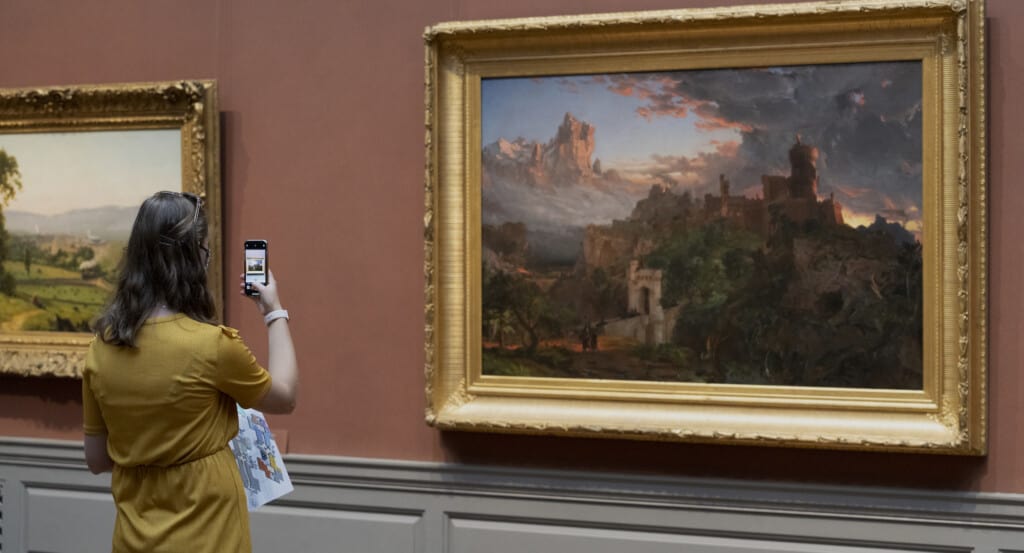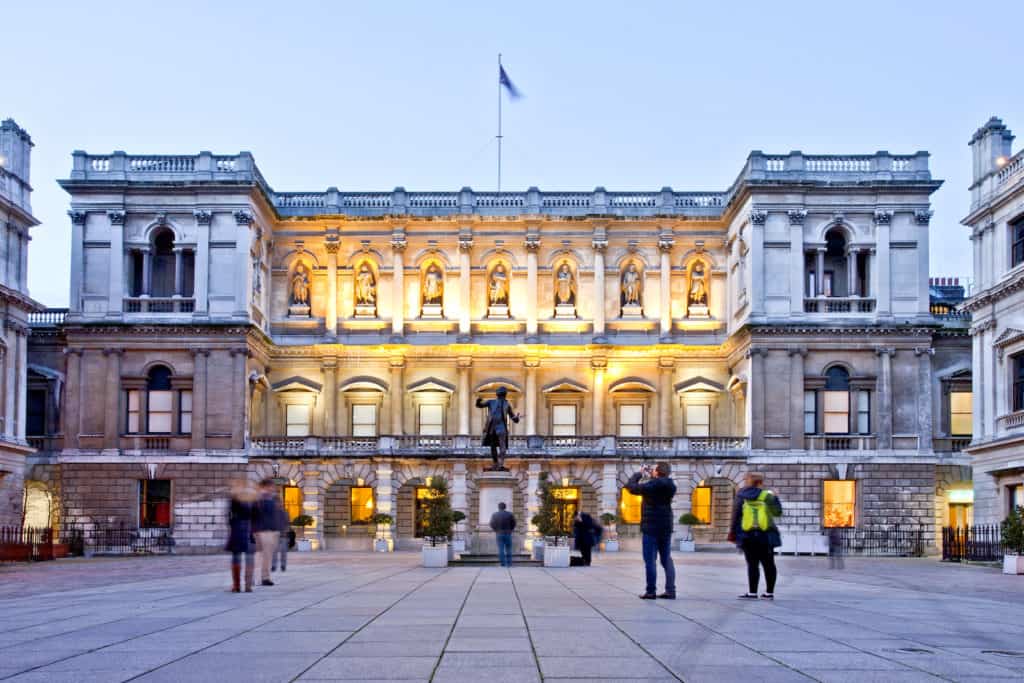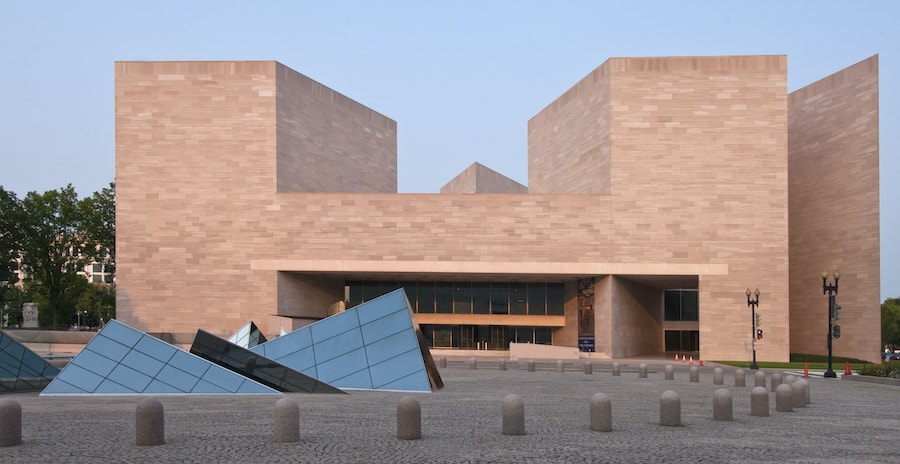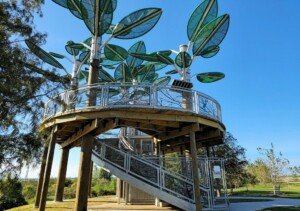Nick Sharp, chief digital officer of the National Gallery of Art (National Gallery) in Washington, assumed his position leading digital experience in September 2020. In this role, Sharp is the senior strategy leader for public-facing digital products and experiences. He is responsible for the museum‘s website, mobile apps, in-gallery interactives, and imaging, video, and audio production.
Previously, Sharp served as the director of digital, data, and insight at the Royal Academy of Arts in London. While there, he built the Academy’s digital offerings from the ground up, delivering exponential growth in users, engagement, and income.
Before that, he helped launch the UK government’s single platform, gov.uk. He also delivered the UK’s digital platforms for the London 2012 Olympic and Paralympic games.
An early focus on digital
Sharp read English at Oxford University, then, he tells blooloop, fell into his next steps “by accident”:
“I left university, then wondered what I could do with an English degree,” he says. “I went and worked for the government for a little while, falling into something that was, broadly, public sector marketing, to do with voter registration. Through that, I got drawn into a digital world. Increasingly, as you live in the modern world, all the services that you’re using have some digital element to them.”
He was instrumental in setting up one of the first websites which enabled people to register to vote online.
“It wasn’t really online; you had to create a PDF, print it out and sign it, then take it to your local office. The problem-solving part of my brain was always triggered by the question of how to put the citizen at the centre of one of those services, rather than the law or the process being the focus. I got drawn into digital things because I’m interested in people. I’m interested in how they interact with each other and with institutions.”
Next, he worked for the Department for Culture, Media and Sport.
“This brought me closer to the arts world. I’ve always been somebody who likes going to galleries and theatres.”
Nick Sharp and the RA
At this point the job at the Royal Academy came up:
“It was just my bag,” says Sharp. “It was a medium-sized institution that was beginning to think about digital.
“One of the big things we did at the RA was set up a digital content strategy. I was lucky to get a very good head of digital content from The Times, Louise Cohen. She supercharged what we were doing in that world, bringing the insights of a journalist who had negotiated the tricky shift from legacy media.”
Sharp was at the Royal Academy for seven years, as head of digital from 2013-2016, then as director of digital, data and insight from 2016 – 2020. He joined the National Gallery of Art in 2020 when the pandemic was at its height.
Touching on how that affected both institutions and their pivot to a digital model, he says:
“The Royal Academy had a pretty good idea of who its audience was. Because the relationship with the audience there typically revolved around someone paying for a ticket or a membership, we had thousands of data points you could connect; thousands of different opportunities for digital content to enhance different points in the journey with us.”
Museum digital in the COVID era
During the pandemic, the groundwork that had been put in around digital content strategy and social media, in terms of hiring the right people and giving them space and time to do things, paid off:
“It meant we had strategies we could quickly roll out,” he explains. “We were able to spend the first couple of weeks pulling together packages of content we’d done before: content that filled the new needs we all had, of community, connection, boredom, relief. We also had this very effective CRM and email marketing team, led by Michelle Kettner. During the first few weeks of the pandemic, we had some of the biggest one-day peaks in website traffic that we’d ever had.”
“It’s a nice moment when you realise that we can connect with people who still feel engaged with us, and hopefully bring a little bit of joy and excitement to people who are stuck at home.”
There were other strategies too, such as video tours of exhibitions, with detailed ‘slow looking’ at artworks:
“Those were popular and seemed to fit the zeitgeist,” he says. “We had a show by a relatively obscure Belgian artist called Léon Spilliaert [1881-1946]. It had been open for about two weeks, and around 9,000 people had been to it. Then we did this digital tour. Suddenly, within 24 hours, twice as many people had watched the video of it. We recognised it as one of those exciting opportunities where digital is a true multiplier.”
Moving to the National Gallery of Art
An art gallery, he points out, is very different from a performance space:
“It’s harder to translate the experience of walking around an art gallery than it is to film a performance, in a certain set of ways. So, that was an interesting time.”
Then came the transition to the National Gallery of Art:
“The National Gallery of Art has a different angle to the Royal Academy. It’s a free gallery, a public service, focused on serving the whole nation of America. It’s fair to say we haven’t yet quite worked out how best to layer our digital content offer so that it appeals both to the National Gallery’s traditional core constituency of scholars, curators, and art historians while maintaining and building an accessible digital offer that appeals to people across the US.”
“At the moment, we’re in this interesting world of trying to open our horizons and make choices in an area where, frankly, we could do anything. The resources are – compared to a British museum – quite significant and the ambition is high.”
Innovating in the face of crisis
The pandemic saw a great deal of forced innovation. While it is impossible to predict exactly which strategies that might evolve from this, he says:
“We’re going to keep investing in the digital content offer and working out a few things that really work there. We are also building our comfort level with ‘trying things’ rather than polishing one perfect project for years.”
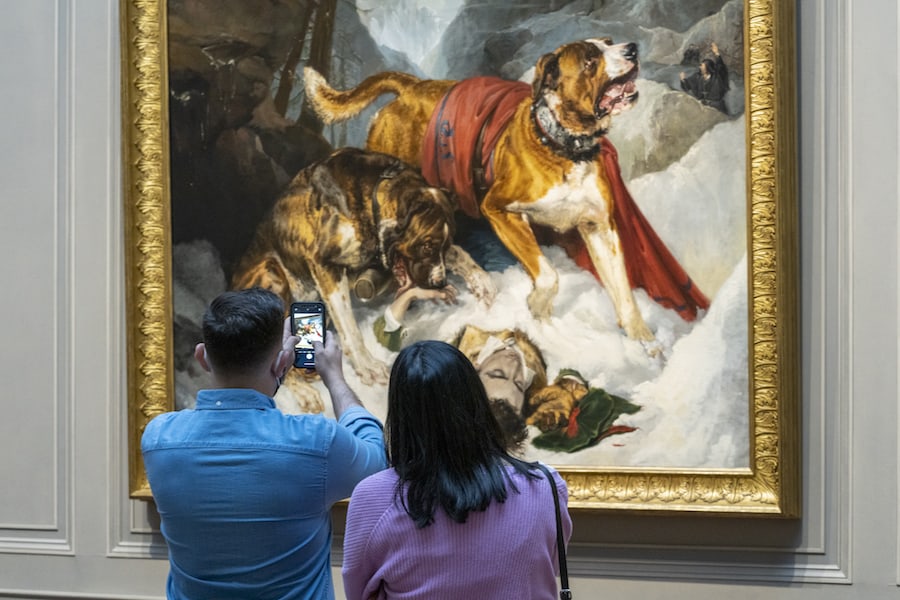
“The interesting thing is that throughout entire career at the RA the ‘holy grail’ – or perhaps the distraction – was ‘can we monetise digital content?’ I don’t know if anyone’s quite worked out how to do that yet. You see the odd examples in art galleries in the UK. But it’s very hard for an art gallery, in comparison with a performance space.”
Injecting personality at the National Gallery of Art
Bringing personality to the fore will be a key understanding, Sharp believes:
“We have just started a video series at the National Gallery of Art, called ‘Your new favourite artist’. Instead of being fronted by a curator or an artist, we’ve picked somebody closer to the audience we’re aiming to reach, an assistant producer in my team. We are trying to think about how you package stuff for different audiences in a way that is natural to media companies, but less comfortable for ‘national’ institutions.
“It’s strange. Here at the National Gallery, it seems like a big leap, relinquishing authority to try and access the authentic voice. There can be a lot of discomfort around that. This is a challenge I thought we had got over in the world of arts, but I don’t think we have.”
He adds:
“Being comfortable about how much of your personality you bring to the workplace, and how you then harness your team members’ personalities as part of an institution, is interesting here. The National Gallery is very much part of the federal government. That brings its own complexity because people are not used to having a human face on that sort of engagement. It’s an extra potential barrier on top of the usual ‘museum’ challenges.”
Sharp is, therefore, engaged in trying to empower people in his team and across the organisation:
“I want them to believe they really can do this. The National Gallery is struggling with dismantling a hierarchical structure. I feel that my job is about trying to flatten things out, and push responsibility down to the lowest level, while building a culture of accountability, starting with me.”
Different funding models
Moving from the RA to the National Gallery was a switch from one type of funding model to another.
He explains what that means in terms of the obligations, limitations, and freedoms offered or imposed by each model.
“When I came to the National Gallery of Art, I saw it as a huge opportunity. One of the things at the RA was constantly having to draw a clear connection between the activity and its justification. For a ‘fun thing’ on social media, for example, it would be, ‘Why do I employ somebody to do that work? What value does that have both in terms of mission, and the turnover?’”
In fact, in this case, he says, the justification was simple:
“At the RA, you could draw a pretty straight line. Our CRM email program was so effective that we made nearly £2 million direct sales from it in a year. It also drove membership retention. The reason that works is because of the digital content engine creating compelling videos and articles around each exhibition.
“Your social team is creating engaging, sharable content that helps fill the funnel. There was clarity in some ways because you’re extending the brand, engaging new audiences, and helping build the bottom line. However, it also means that the focus can skew too commercial. Things can fall away if they are not moving people down the funnel.”
A new challenge at the National Gallery of Art
With the move to the National Gallery of Art, he imagined it would be easier:
“I thought, ‘Wow, it will be so great to have less commercial pressure: being able to decide exactly what to do.’
“In fact, that turns out to be the problem. How do you balance a complex, in-depth feature on the website that allows you to see five different layers in each painting, the x-ray, the chromatography, the raking light – a feature that could be invaluable for a group of art historians – up against creating a video series that will engage first-time art museum visitors? How do you weigh up one of those things against the other, in any kind of vaguely objective way?”
Digital decisions
How to make decisions about programming, collecting, and brand and marketing is, he says, a challenge across the whole organisation:
“It’s not just a digital problem. But it can be particularly difficult in digital because the ability to track online behaviour can lead to numbers-led goals. That can get very tricky in an arts organisation.”
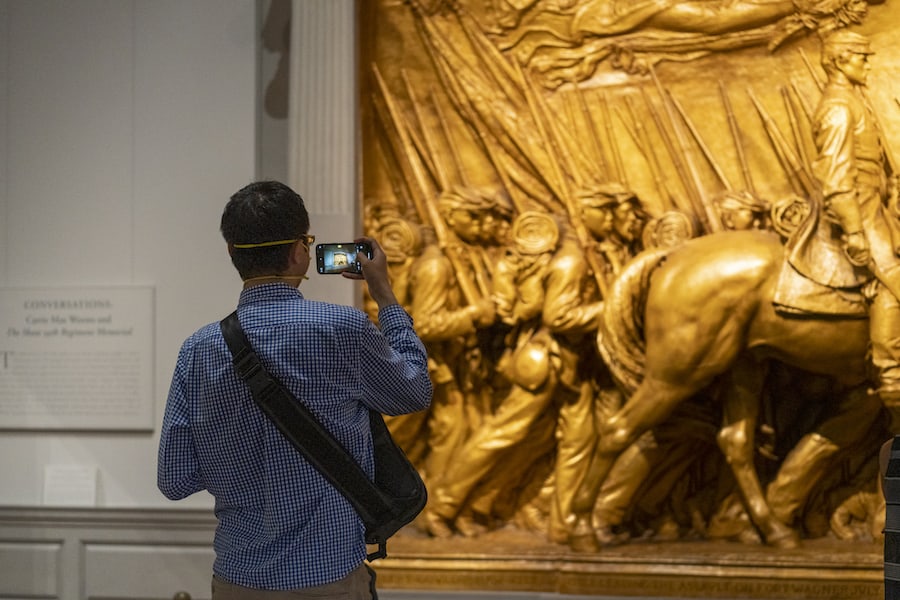
“It’s nice and easy when you can say, ‘We made 2 million pounds from our email program last year.’
“It’s a lot harder when 17 people are deeply engaged in a workshop that we’re live streaming, versus 60,000 who might watch a video. How do we decide which of those is more ‘important’, and worth the investment? What do we stop doing, in order to make space and time for new activity?
“I think it requires a lot of leadership heft to constantly be focused, saying, ‘No, we’re going in this direction. This is how we’re going to do it. We’re not doing those things that we used to do.’
“Every organisation finds it hard. But it’s particularly hard when it’s difficult to weigh up why we continue doing this activity that we’ve been doing for 15 years, versus some risky thing that may take us somewhere – yet may also go horribly wrong.”
This sort of leadership is exciting. But it is also a responsibility that requires confidence. “And sometimes I sit here, thinking, ‘Who am I to lead these discussions?’”
A talented team
Often, he explains, in the larger large institutions, a lot can weigh on the new person that arrives.
“We are lucky to have had an amazing new director join recently.”
Kaywin Feldman, an American archaeologist, is the first woman director of the National Gallery of Art. She took over from Earl A. Powell III in March 2019.
“She has made lots of extraordinary changes; helped find and bring forward incredible colleagues. Over time, that gently moves the culture of the place forward. Big changes and new arrivals can also cause discomfort though. There’s a whole process to go through around organisational change.”
I want to encourage [the team] to relearn that they can have a voice in wider discussions across the National Gallery. Their viewpoint matters.
“One of my things is trying to help my amazing team to exercise some of the muscles that may not have been used for a long time.
“I want to encourage them to relearn that they can have a voice in wider discussions across the National Gallery. Their viewpoint matters. They can point stuff out, and they can make decisions, where maybe they’ve not been allowed before. It takes a while to feel comfortable with that and to feel trusted. But it is an important place to start.”
Navigating politics
What happens when politics imposes itself on an institution? The Royal Academy of Arts was caught up in a de-platforming controversy in June. After removing her work from its gift shop, the RA later apologised to artist Jess de Wahls, who had been accused of transphobia because of views espoused in a 2019 blog post.
How can that difficult sort of situation best be negotiated?
“It is a tightrope,” Sharp says. “One thing the RA is that it is a private institution, broadly, run by a selection of artists. It doesn’t receive any government funding. So, it is supported by members, visitors, and donors.”
An apology from the Royal Academy: https://t.co/U6Hw090gWW
— Royal Academy (@royalacademy) June 23, 2021
“There is an element of autonomy that allowed certain freedoms for the leadership to decide one thing or the other. This is great but it can also get you in trouble. The situation they had with Jess de Wahls was, thankfully, after my time. I think it was extremely difficult for the RA, which, like many similar institutions, is negotiating generational challenges.
“As a national body – the is clue in the National Gallery of Art’s name – our complexity here lies in both trying to reflect and attract the nation. This involves inviting people in and proving the relevance of the incredible narratives of our collection. But also reflecting the recognisable and relevant stories about the art, so people can see themselves in it.”
Engaging the nation at the National Gallery of Art
This, he explains, is very tricky in a giant country like America that is so full of contradictions and political challenges.
“As an institution, we’re trying to engage with this topic really quite deeply,” he says. “We also have to understand what we’re best placed to do. This is because we’ve traditionally been primarily a ‘Western canon’ museum concerned with Western European and American art.”
The focus starts with curatorial decisions, and with big cultural changes as an organisation:
“We have recently hired our first curator focusing on African diasporic art.”
Kanitra Fletcher joined the National Gallery of Art as associate curator of African American and Afro-Diasporic Art on February 1, 2021. As part of the Department of Modern and Contemporary Art, she is responsible for guiding the museum’s collection of African American art.
“Our chief diversity and belonging officer started recently, too: on the same day as I did.”
Mikka Gee Conway, who began her tenure as chief diversity, inclusion, and belonging officer and EEO director in September 2020, leads diversity, equity, and inclusion work across the National Gallery. She also oversees the institution’s EEO office.
Involving everyone
Sharp continues:
“The focus lies in doing big work across the organisation, involving people from all parts of it, not just people who are buying art or programming stuff, to try and be a community working together to fulfil the same strategic priority: that of reflecting and attracting the nation.”
However, he adds:
“It’s a balancing act. The National Gallery of Art is a part of the federal government. As such, it has a duty to present things in an equal, measured, and balanced way. Sometimes, that commitment to equality, in the traditional, federal sense of ‘treat everyone exactly the same’, can come up against equity, where you’re trying to rebalance a historic inequity.”
A whole new world
This is a new world for Sharp to be working in, he says:
“But also, a super interesting one. It’s something that this institution is genuinely, deeply committed to exploring. Even when it’s quite difficult. It involves difficult conversations internally with colleagues and asking yourself difficult questions about your cultural background.”
It’s something that this institution is genuinely, deeply committed to exploring. Even when it’s quite difficult. It involves difficult conversations internally with colleagues and asking yourself difficult questions about your cultural background.
“I’m lucky enough to be part of a large group of front and back-office staff working with the International Coalition of Sites of Conscience. This is an organisation that has worked with cultural and political heritage across the world. It is helping to facilitate our work in this area.
“Being an immigrant for the first time, albeit with all my enormous privileges, I suddenly realise how many cultural touchpoints are completely lost on me. I feel like I’m constantly blundering into things that I don’t understand. It’s tricky to try and be a useful leader in these conversations when I’m thinking, ‘What do I know about this?’ But I am learning to sit with the discomfort in order to grow as an individual and as a team.”
Attracting a wide audience at the National Gallery of Art
Attracting and representing the broadest audience possible audience is a key goal. So, how does the National Gallery of Art set about reaching audiences who might not see art as relevant to their lives, or who may not be able to afford the time or money to make room for it?
“It is really difficult, in a country and a city which can seem extremely segregated – by race, income and opportunity. This city is rich in extraordinary cultural heritage, but it can feel like different communities can almost live different lives.”
“There is, I think, an opportunity the gallery has – without descending to platitudes – around telling the stories of art. This can reflect our shared humanity and could bridge gaps.”
The National Gallery of Art is a free museum. However:
“Being free is not the same as people feeling welcome in the place,” says Sharp. “We are currently starting work on a visitor experience blueprint. One that thinks a bit about all the different touchpoints, how it feels to cross the threshold, and how you’re invited in.”
Digital content is key
This is an area where, he feels, social and digital content has a role:
“It can create the kind of things which help to grow and amplify the audience, and which show people the National Gallery of Art has something for them.
“This could involve developing our social tone of voice (and we have an amazing social team) for example. This allows people to see the gallery not just as a giant building on the Mall, but as a day-to-day presence in their life. With social media, especially, you have a very intimate relationship with your audience. We’re sitting among your family, your favourite singer, the Vice President on your social feed.”
Forging a close connection with audiences is now possible in a way it would not have been fifteen years ago.
However, resources are limited, and it does mean certain choices have to be made. Many American museums are having to balance the need to reflect the diversity of the city whey they are situated, with continuing to be the place that some of the audiences have been with and have enjoyed for a long time.
“It can sometimes be difficult to fulfil all those different roles in people’s lives,” says Sharp.
The future of digital
Does he envisage a time when all museum’s collections will be online in an accessible format?
“I think that’s a good basic level to start with. Rather like Google’s mission to organise the world’s information; museums started doing that centuries ago.”
We are on a mission to make as much of our art as possible photographed, catalogued effectively, and put somewhere that people can reach it.
“We have a large and brilliant digitisation and imaging team. The National Gallery was one of the early pioneers in providing open access to our images. We are on a mission to make as much of our art as possible photographed, catalogued effectively, and put somewhere that people can reach it.
“The next bit then is to establish how that becomes relevant, and something which you can access in easy ways. Google Arts and Culture has done a really good job of starting that off. The next step is the various linked open data projects that are standardising the vocabulary and structures of artwork data.”
Being where people are
Eventually, he believes, museums may no longer feel the need to invest so much in their own websites and platforms:
“The National Gallery of Art gets literally thousands of times more views of our artworks on Wikipedia than we do on our website. This is because they’re used to illustrate historical moments and places, and so on. That’s the exciting opportunity, where you realise that this is not a case of how you entice an audience to come to your platform or through your doors.”
In fact:
“We are fulfilling this role of being where people are, rather than having to bring them to us.”
Nick Sharp’s plans at the National Gallery of Art
Sharp has two core objectives for this year. “We’ll shortly start creating our Experience Blueprint,” he says.
This is a set of user research:
“It’s about understanding how our audiences are engaging with the National Gallery across a range of digital and physical moments. Perhaps using our app or our website. It looks at different sets of audiences engaging with the National Gallery with different intentions, needs and desires: how tourists interact with the National Gallery compared to more specialist audiences, like researchers or teachers, for instance.”
“It’s about finding out who those people are, being explicit about them and their needs, then putting those needs at the centre of what we’re doing.”
Then there is the redevelopment of the website:
“Under a traditional model, it ‘needs doing’ every eight or 10 years. So we are coming up to that cycle moment. We will use that as a watershed moment to ask existential questions like, ‘What is the point of this? Why do we have a website at all? What are the important things that we do as an organisation, and what information, tools, and content about that need to be on this site? What are the things that we are just holding onto because someone did a project about it six years ago?’”
A new strategy
The second objective involves working with his colleagues across the National Gallery of Art to build and deliver a digital content strategy, particularly with the National Gallery’s chief content officer, and publisher, Emiko Usui.
“For me, that involves having people who are specialists in creating explicitly digital content. That seems an obvious thing to say. But it’s difficult to expect people who are brilliant at writing a catalogue entry or a wall text suddenly to be great at creating video for social media. Of course, people can develop and discover skills, but it’s unfair to set goals without also investing to reach them.”
“It’s important to respect the fact that UX writing, or being a digital journalist, or being a talented social producer are specific skills. And they are skills that museums haven’t always had. It’s fine to acknowledge that you need some other people and skills to come in, help us, and be part of the team that is fulfilling that role.”
Building on the National Gallery of Art’s strengths
Sharp also talks about the value of simplicity:
“People often think there’s something more snazzy or complex that they need to do for digital stuff. Writing articles that just have words and images is effective. You don’t need to have a representation of a 3D space you ‘walk’ around in. You can do the same thing with a beautifully illustrated article. That is something good to celebrate, in itself.”
The aim, then, is to build a new digital content strategy. One that builds on the museum’s strengths and recognises the interests of its market:
“It will do the job of pulling together things that people are interested in doing, and things that we are uniquely placed to be good at. In the middle of the little Venn diagram is the part where we recognise our focus should be.”
All images kind courtesy of the National Gallery of Art unless otherwise stated. Header image: A visitor captures Jasper Francis Cropsey’s The Spirit of War, 1851, oil on canvas, National Gallery of Art, Washington, Avalon Fund, 1978.12.1
